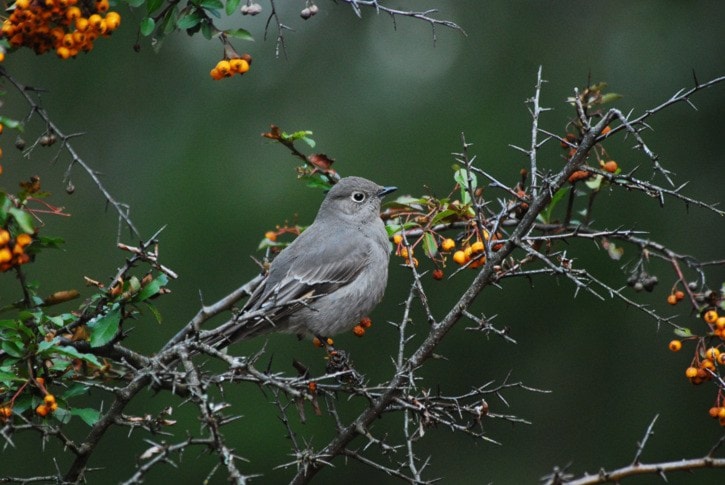Spring migration – I have been reminded recently just what an amazing spectacle this is!
A friend of mine from Australia is currently living in Nakusp; migration in Australia is barely noticeable in much of the country. The vast majority of birds there remain year-round; Australian birders do not witness a mass departure in the fall or the dramatic return in the spring. But that’s exactly what’s happening now in B.C.
I had been away during the Easter long weekend but on Tuesday I spent a few hours birding around town, in Brouse and up to Box and Summit Lake. I saw eleven species of birds that were not here prior to the weekend.
This pattern will continue now for a few more weeks, with new species arriving almost daily. Some of the most noticeable arrivals are the ducks.
During the winter we normally have three or four species on Arrow Lake; so far in April I have seen 16 species of ducks. Other early arrivals include Common Loon, Merlin, Killdeer, Violet-green and Tree Swallows, Ruby-crowned Kinglet, Mountain Bluebird, Townsend’s Solitaire, Yellow-rumped Warbler, Spotted Towhee, Savannah, Lincoln’s and Fox Sparrows and Brewer’s Blackbirds.
In addition to these arrivals, there are other signs marking the changing seasons.
Birds make an assortment of noises all year, but each species has its own unique song that it sings only during the breeding season. Song Sparrows, Black-capped Chickadees, Oregon Juncos, American Robins and Varied Thrush are all singing now. Woodpeckers don’t sing but have their own method of making their presence known; they drum rapidly on trees.
Some woodpeckers, Northern Flickers in particular, have learned that some surfaces make even more noise than a tree trunk. Metal roofs and the metal covers to street lamps seem to be favourites.
In some species, there is a change of plumage in the spring. Most notable is probably the American Goldfinch. All winter long they have been wearing their winter clothes of subdued greens, greys and yellows. But now they are turning bright yellow and sporting small black caps – quite a transformation!
And nest building is well underway in some species. There is a pair of chickadees excavating a hole in a dead birch in my yard and the Bald Eagle is already sitting on eggs at Summit Lake.
At the back of my house I have a pyracantha bush. I planted it years ago because I’d seen birds eating the berries on these bushes elsewhere. But for years nothing came to my berries. They would remain on the bush all winter and then dry up and fall off in spring. But during the last couple of weeks two birds have discovered my pyracantha. First came a robin and then a Townsend’s Solitaire.
Each day, both visit the bush several times to eat a few berries. The robin appears to be the boss; the solitaire quickly leaves if the robin comes back. Both are members of the thrush family and therefore eat insects and berries. The robin will probably remain and nest somewhere in the yard; the solitaire is a migrant and will likely be gone in a few days.
Some of the arriving migrants, such as the Yellow-rumped Warbler and the Ruby-crowned Kinglet, are small forest birds and they may go unnoticed by many people. But during the next week I expect two very obvious species to show up in Nakusp: Osprey and Rufous Hummingbird.
Every year the Osprey shows up here in mid-April and the hummingbird is generally just a few days behind.
If you plan to put out a hummingbird feeder this year, now would be a good time to get it out and give it a good cleaning. Hummingbirds are very susceptible to bacterial and fungal infections, so cleanliness is essential!
